Fengshui (Chinese Characters: 风水), or Chinese Geomancy, is an ancient philosophy that focuses on creating harmony between people, buildings, and nature according to Chinese traditional beliefs. These pseudoscientific guidelines cover a broad range of ideologies that are passed down through many generations from ancient China. Most Fengshui followers believe that the life energy of an individual or a dwelling can be adjusted with small lifestyle and environmental changes which would ultimately improve and enrich their overall lifestyle. Historically, Fengshui was used vastly to position infrastructures such as ancestral tombs, residential homes, and agriculture fields in an auspicious manner to bring luck to their family, land, and businesses. Today, the use of Feng Shui is still very popular in Asian Architecture with many famous architects consulting Fengshui masters to adopt these traditional concepts into their projects. Examples of these renowned buildings include The HSBC Building by Norman + Partners, The Bank of China Tower by I.M Pei, and the Sydney Opera House by Jørn Utzon. This article is a short compilation to briefly introduce 10 things architects and designers must know about Feng Shui.

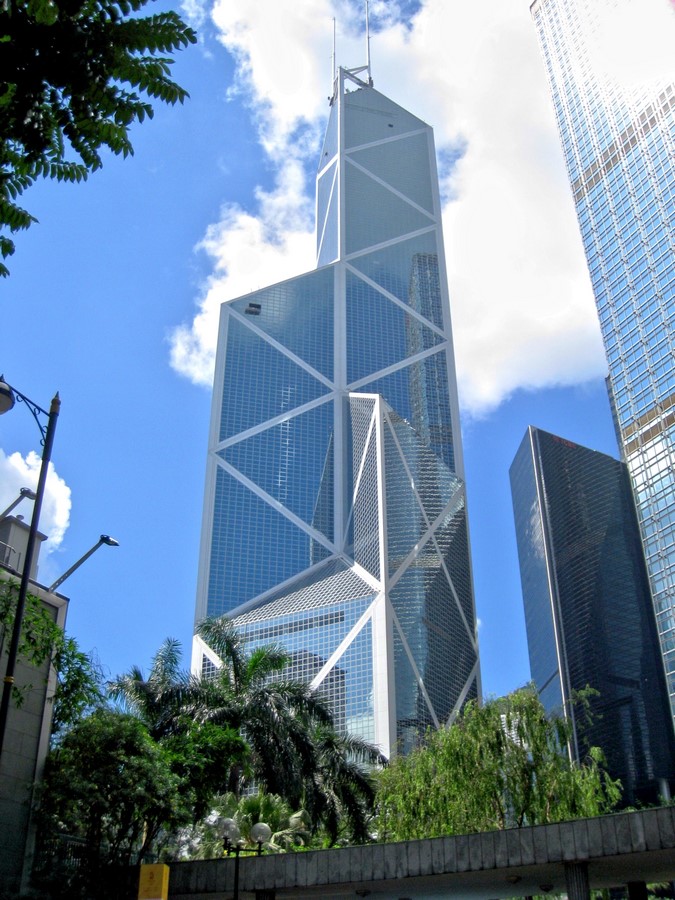

1. Introduction to Various Feng Shui School Approaches.
As the Chinese saying goes, “For every ten years, Feng Shui takes a turn” (Full Chinese Phrase: 十年风水轮流转,百年田地转三村). This means that a person’s life can never always be smooth sailing as his fate changes with time. Due to this ever-changing variable, many Feng Shui schools have been established to help people achieve prosperity in their life, relationships, and careers. Depending on which school of thought is being used, the school might promote different approaches to determine the best Feng Shui layout for inhabitants to harmonize with their spaces comfortably. The most common Feng Shui branches include Ti Li (Form Branch) which uses XingShi Pai “Forms” Methods that perform environmental analysis without the use of a compass and the LiiQi Pai (Compass Branch) which follows the teaching of the San Yuan Method and San He Method to conduct environmental analysis with a compass.
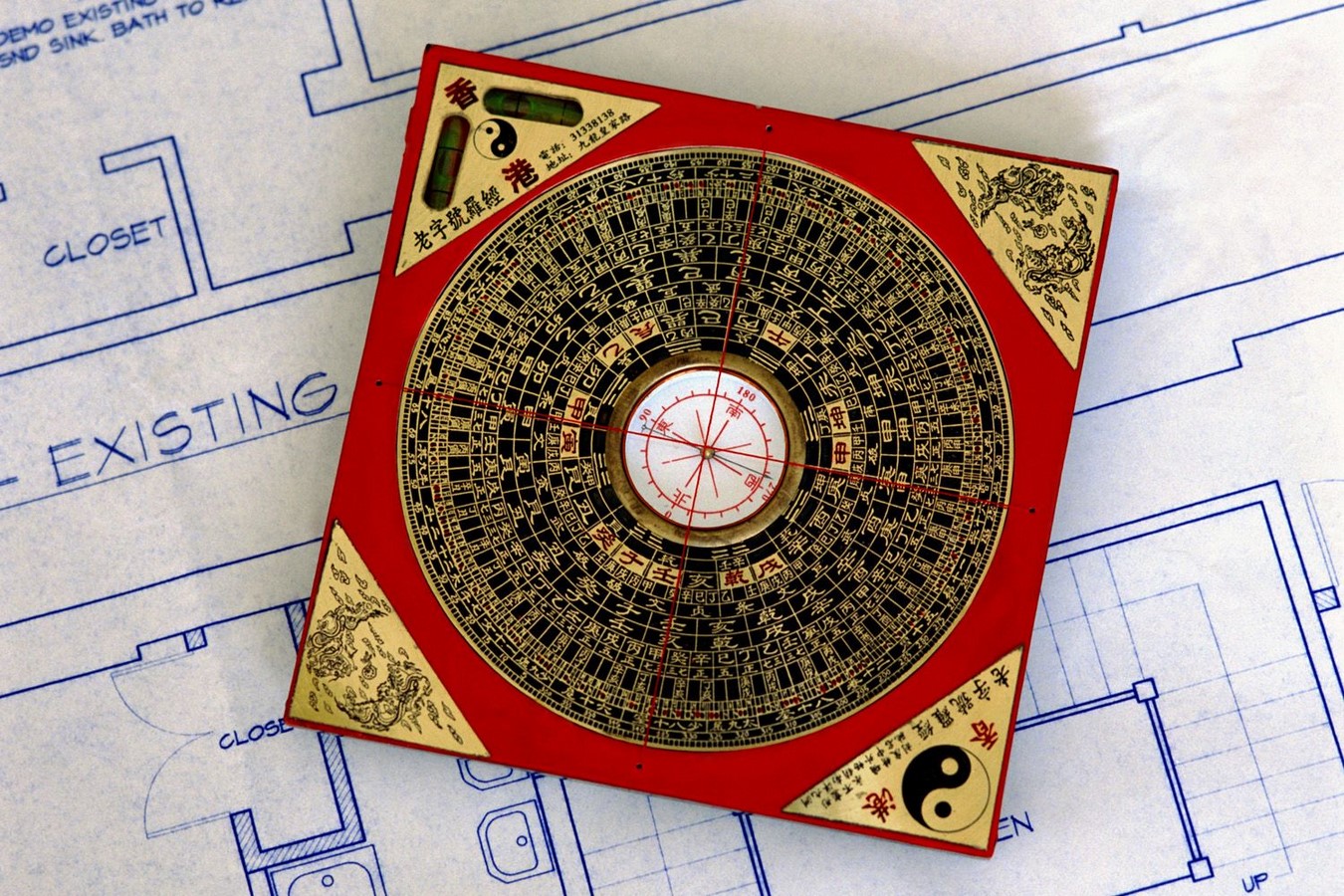
2. The Most Essential Term in Fengshui: Qi.
Qi or Chi (Chinese Character: 气) is an imagined form of energy that plays an important role in Fengshui. By definition, Qi generally refers to a person’s positive or negative life forces. In architecture, the main goal of Feng Shui is to build structures on good sites to attain good Qi for the inhabitants to live in. A good site can be determined by its geographical location at a specific period. The importance regarding the flow of Qi evident in the Book of Burial (Chinese Character: 葬书) written by the Taoist Mystic Guo Pu (Chinese Character: 郭璞) as early as 4th century AD where it states that burials are strategically placed to takes advantage of the “vital Qi” in the land. Therefore, Families would usually take advantage of these congealed Qi by placing their family tombstones in good Feng Shui locations. In some instances, some people would destroy their enemy’s ancestral graveyards to weaken their Qi based on this Feng Shui superstition.
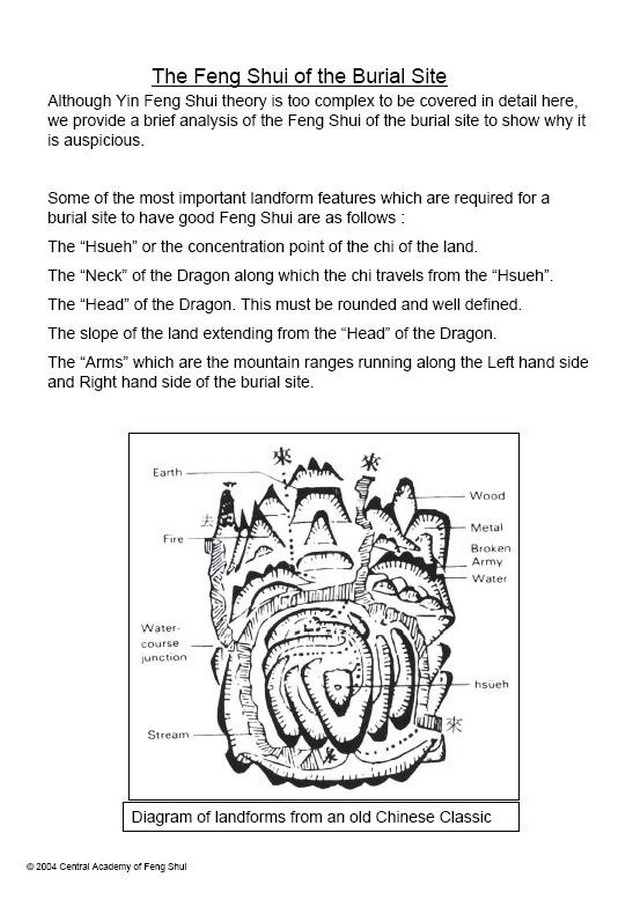

3. Feng Shui Has Many Theories to Achieve Good Qi.
The Yin and Yang (Chinese Character: 阴阳) is a popular theory used in Feng Shui that explores the idea of Polarity. The dualism in yin and yang can be compared as two opposing magnetic forces which create energy while the yin side receives it. Their believers aim to balance these two contrasting forces within their household, creating harmony between the passive and active energy forces. Other than the Yin and Yang ideology, the Five Element concept is also developed to use material and colors representing the Water, Fire, Wood, Earth, and Metal forces to benefit individual well-being. Hence, the vast selection of architectural Feng Shui principles can be implemented in projects of various scales from planning the layout for a city to the construction of infrastructures to achieve spiritual wellness for the inhabitants.
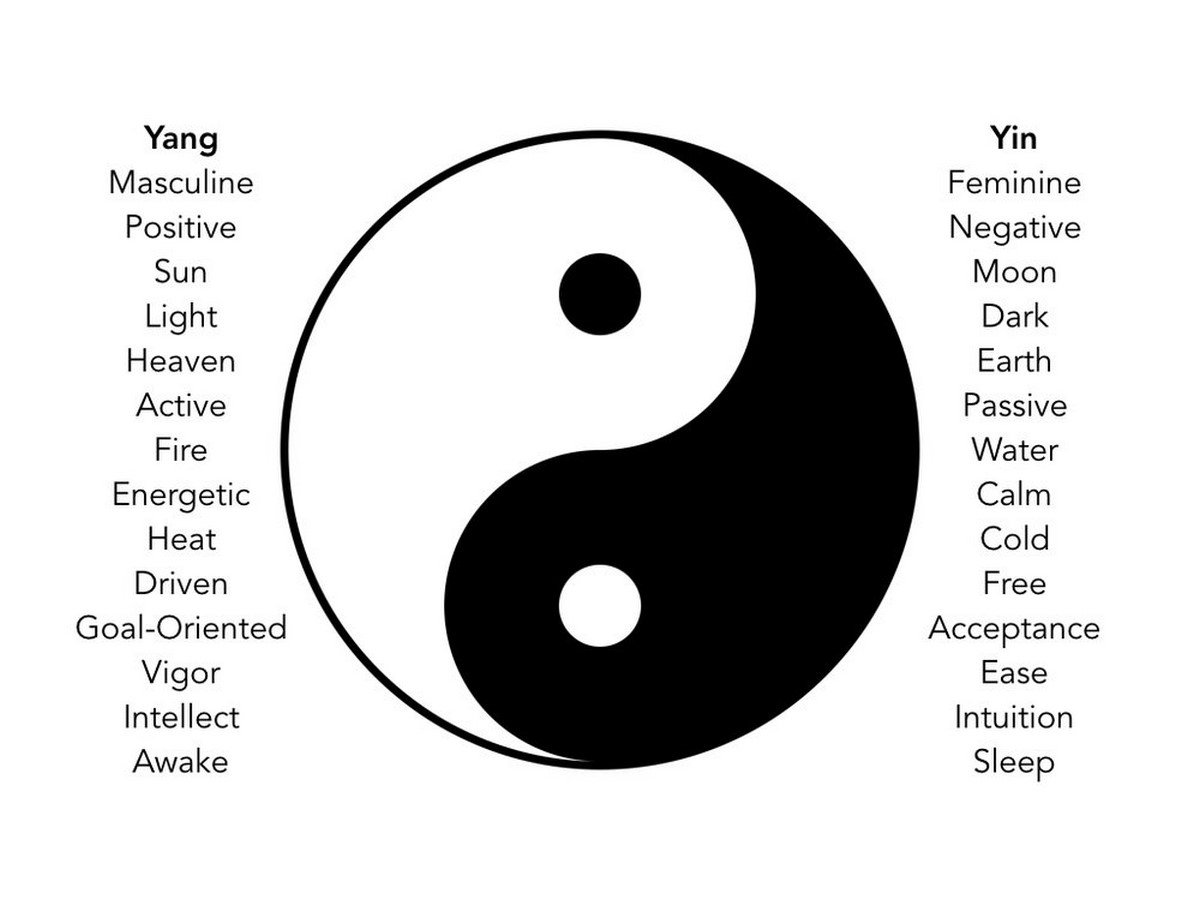
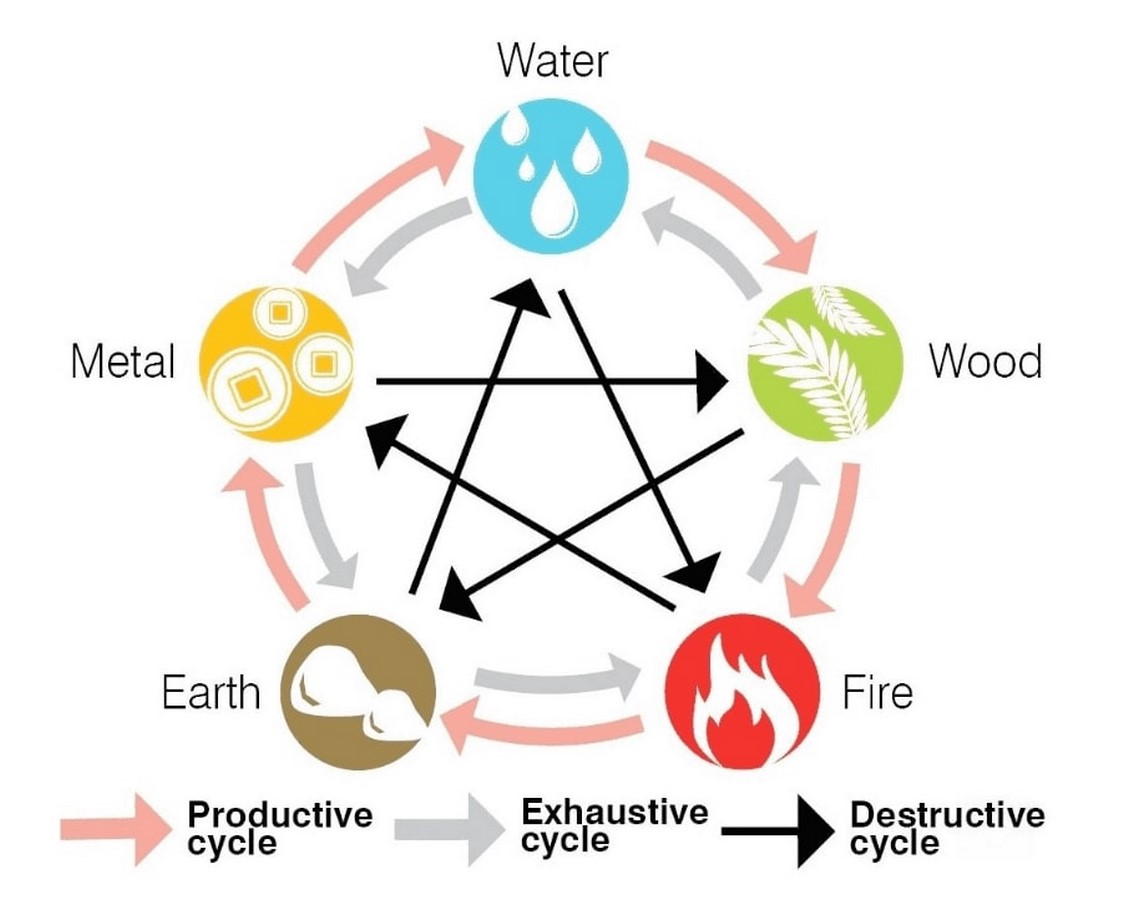
4. The Use of the Eight Trigrams in Floor Plans.
In Fengshui, the Bagua (Chinese Character: 八卦) or Eight Trigrams is important as seen in its mention in the ancient Chinese divination classics known as Yijing (Chinese Character: 易经) produced between the 10th to 4th centuries BC. The Bagua was derived from important Feng Shui diagrams such as the He Tu (Chinese Character: 河图) and Luo Shu (Chinese Character: 洛书). Under the influence of the Feng Shui diagrams, the Bagua layout has adopted two different kinds of arrangements. The Bagua that adopts the He Tu results in the Earlier Heaven Arrangement while the use of Luo Shu produced the Later Heaven Arrangement. In architecture, Fengshui believers would normally use the Bagua with the Later Heaven Arrangement to analyze the flow of Qi in a space. The Bagua is applied to arrange rooms in the dwelling’s floor plans and set space boundaries in each trigram direction to allow better movement of energy for homeowners.
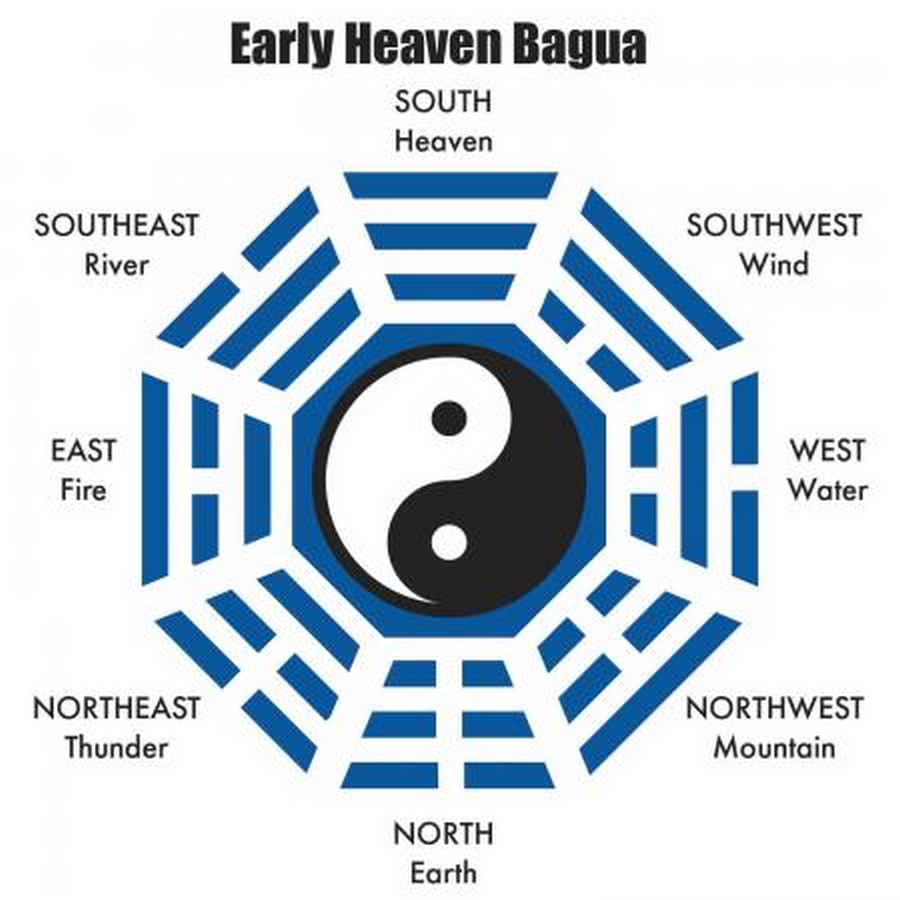

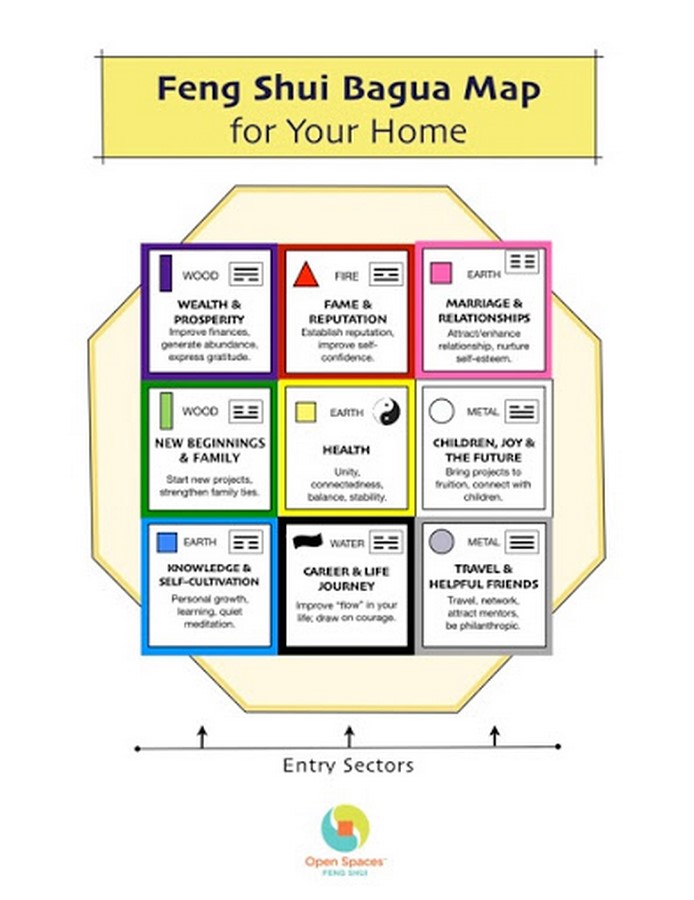
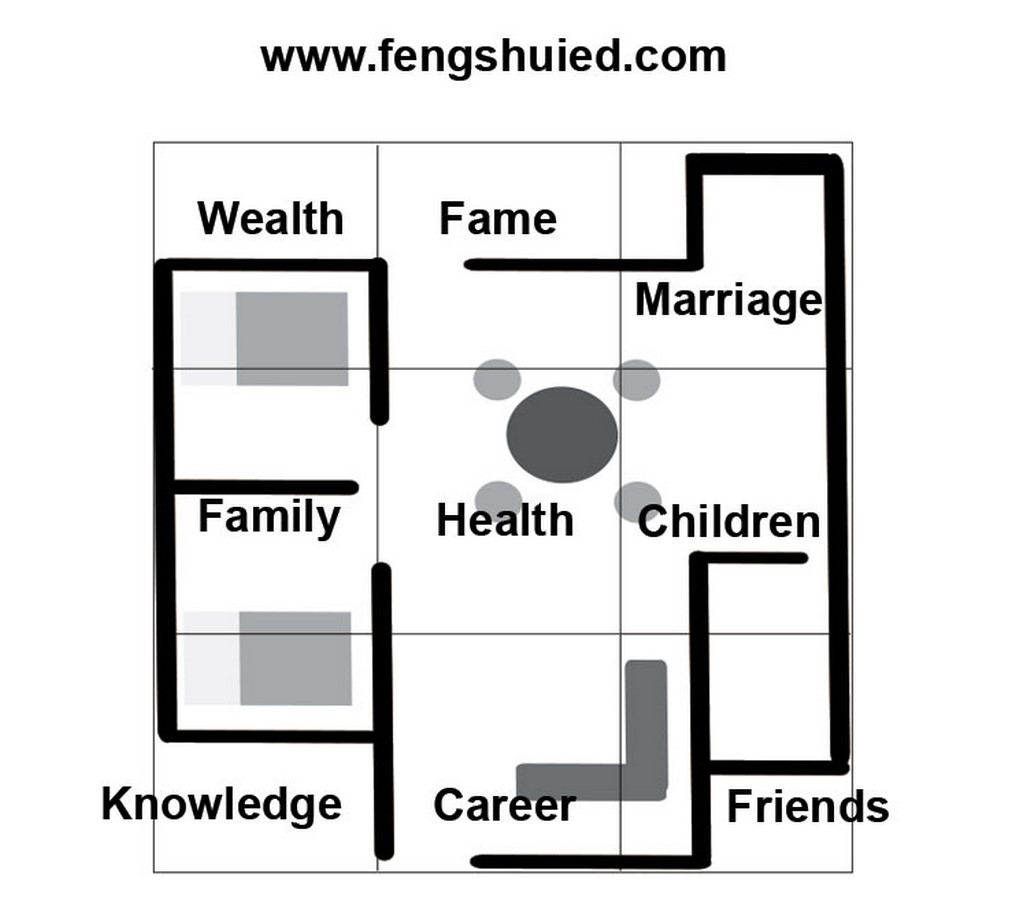
5. The Preferred Shape of the House is Geometrical.
The square or rectangular form in houses is preferred as these shapes are said to help achieve balance, symmetry, and maximum functionality between interior spaces as the desirable Qi can flow through the house better. A prime example using this Fengshui guidance is the Forbidden City. This Ancient architecture was built with a square layout and was constructed in a bilaterally symmetrical manner. The Forbidden City has an axis line running in the south-north direction with important buildings built directly on it. The Hall of Supreme Harmony, Hall of Middle Harmony, and the Hall of Preserved Harmony are important as they contained the emperor’s throne. Other infrastructures within the imperial city are also carefully arranged symmetrically opposite each other. These strict building rules can also be observed beyond the walls of the imperial palace where the Temple of Heaven and the Alter of agriculture have also constructed either side of the same south-north axis line. Therefore, the Feng Shui ideology to achieve a balanced symmetry for good energy force in today’s architecture can be seen in its roots from its ancient Beijing City precedent studies.

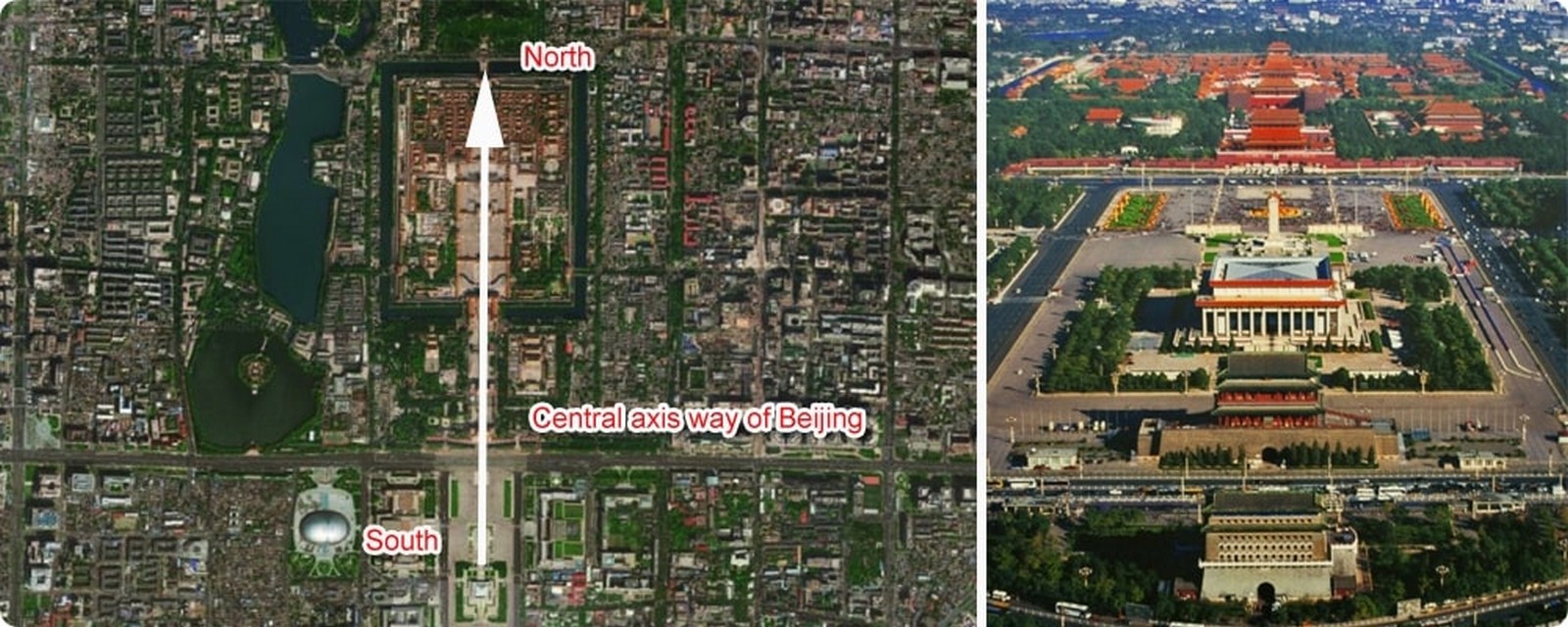
6. Curves are also Welcomed in Design to Achieve Good Fengshui
In Fengshui, geometrically shaped houses also have negative effects without the careful placement of doors, windows, and vegetation. The presence of long and narrow corridors within the dwelling will result in rapid Qi movements, causing discomfort to its inhabitants. Hence, houses with curved elements are said to be able to allow positive Qi to circulate constantly, producing a high-energy space. Being a symbol of vitality, curve characteristics can be seen in bridges, corridors, and rivers within the Ancient Chinese Streetscape. However, these curves might result in high Qi energy which would make spaces too hectic for people to live comfortably in. Therefore, Feng Shui would encourage the design of the house to have a moderate mixture of geometrical and curved features to achieve good Qi flow for optimal living comfort.
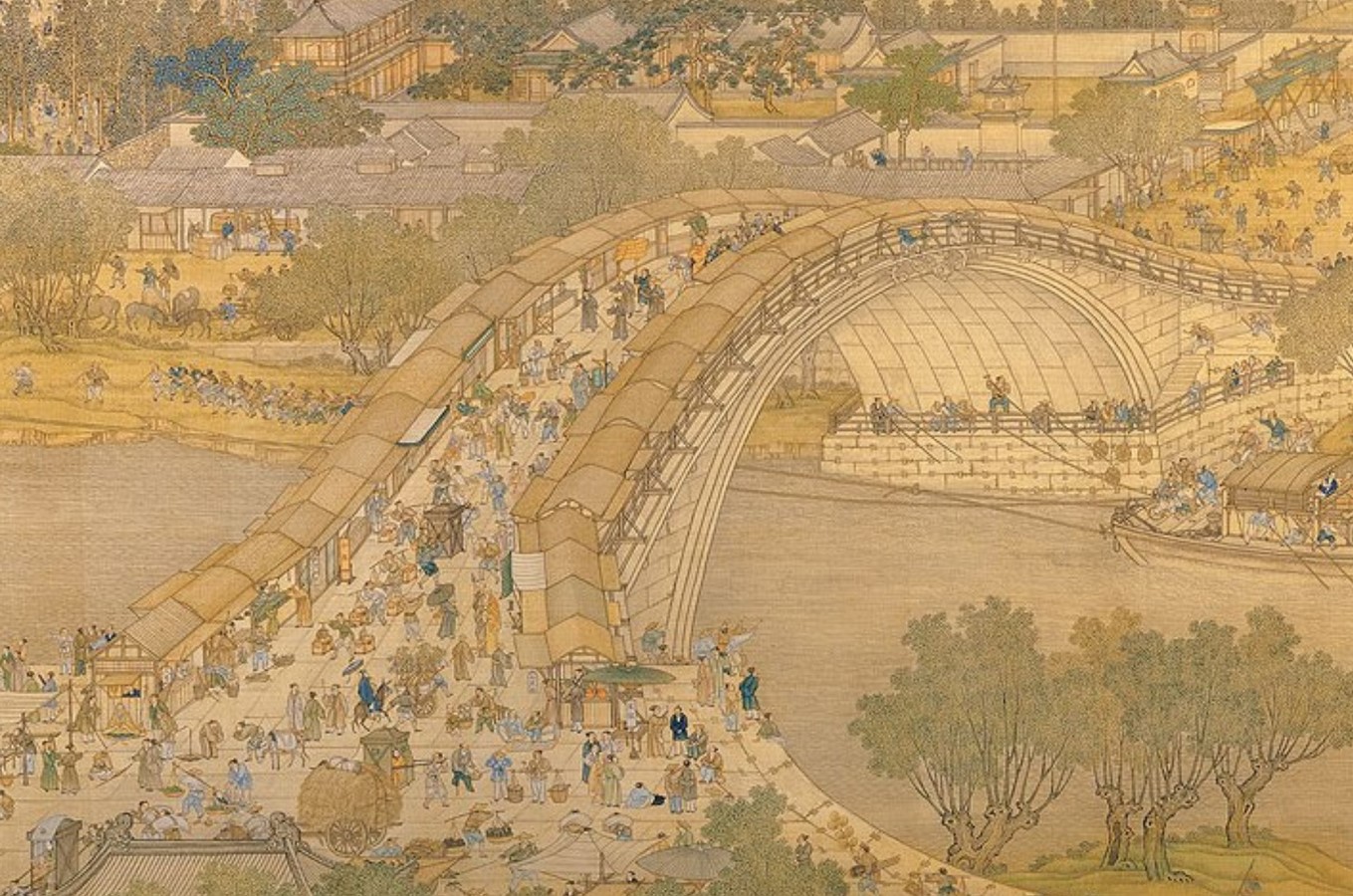
7. Fengshui Utilize Natural Features such as Natural Geographical Features, Daylight, and Proper Ventilation in Buildings.
After conducting a site analysis of the surrounding landscape, most Feng Shui buildings orient themselves where the front of the house faces a waterbody while the back is placed towards the mountains. It is said that these natural landscapes have a good source of Qi and the orientation brings about stability, security, and wealth for the household. The use of sunlight and good air circulation are also crucial for a building to be deemed as having good Feng Shui. The flow of Qi in any floor plan can be improved or worsened by using various shapes, sizes, and colors of doors and windows. The rule of thumb to maintain a constant cycle of Qi in the house is to avoid placing doors and windows directly in a row. Another example also includes the avoiding presence of arguing doors. Arguing doors (Chinese Character: 门冲煞) refers to the close arrangement of doors which results in the doors touching each other when fully opened. According to the Feng Shui belief, this would disturb the Qi movement which will lead to arguments and disagreements within the household. The overall assumption for these guidelines is that doors and windows have a higher level of energy movements around. Hence, the placements of doors and windows require more spacings for a better level of natural light and wind into the house which will improve the building’s Feng Shui properties.
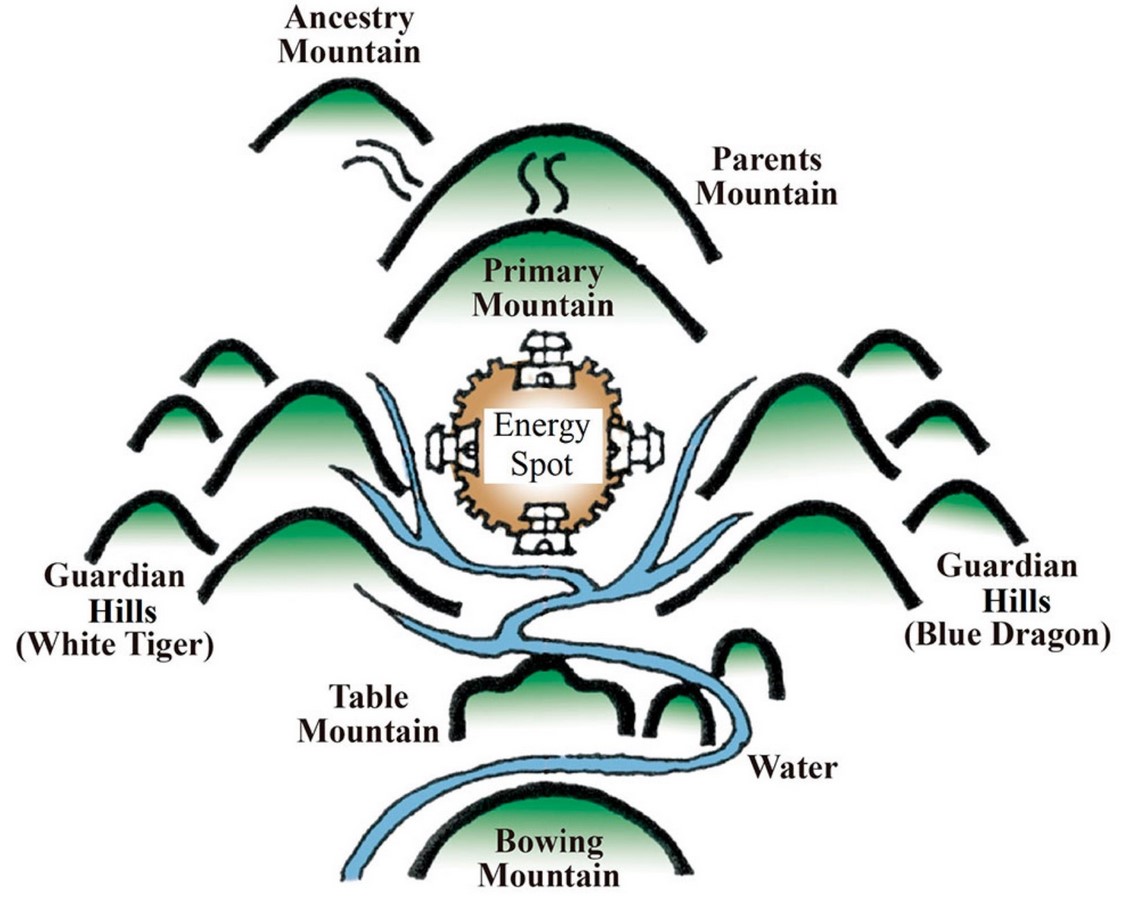

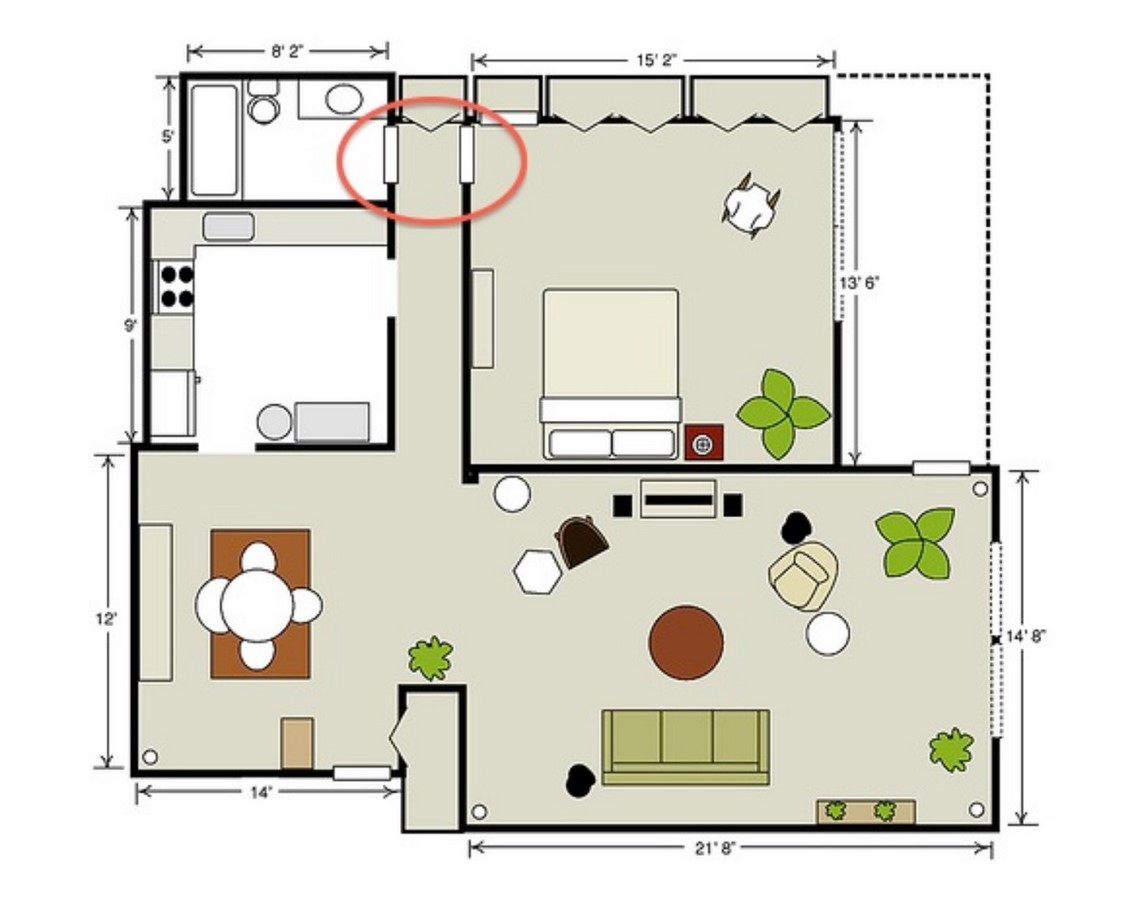
8. Resting Areas should Avoid Sharp Corners and Protruding Objects.
The presence of sharp corners or protruding objects found internally and externally around the residential building is called Sha Chi or Poison Arrow (Chinese Character: 尖角煞) in Fengshui. It is said that the sharp edges harm your personal Qi energy field, weakening your health over time. Therefore, it is important to avoid or reduce the impact of the poison arrows in personal places you spend the most time in, especially the bedroom. The poison arrows can be in the form of protruding ceilings, sharp angles from furniture, and the edge of a neighboring building that is facing towards your direction. However, a slight repositioning of sharp furniture away from you, replacing the problematic items with new round-edged ones, and using plants or cloth pieces draping over the permanent sharp corners can eventually reduce the negative effects of the poison arrows. Therefore, the removal of Poison Arrows helps homeowners to relax in their residential dwellings.
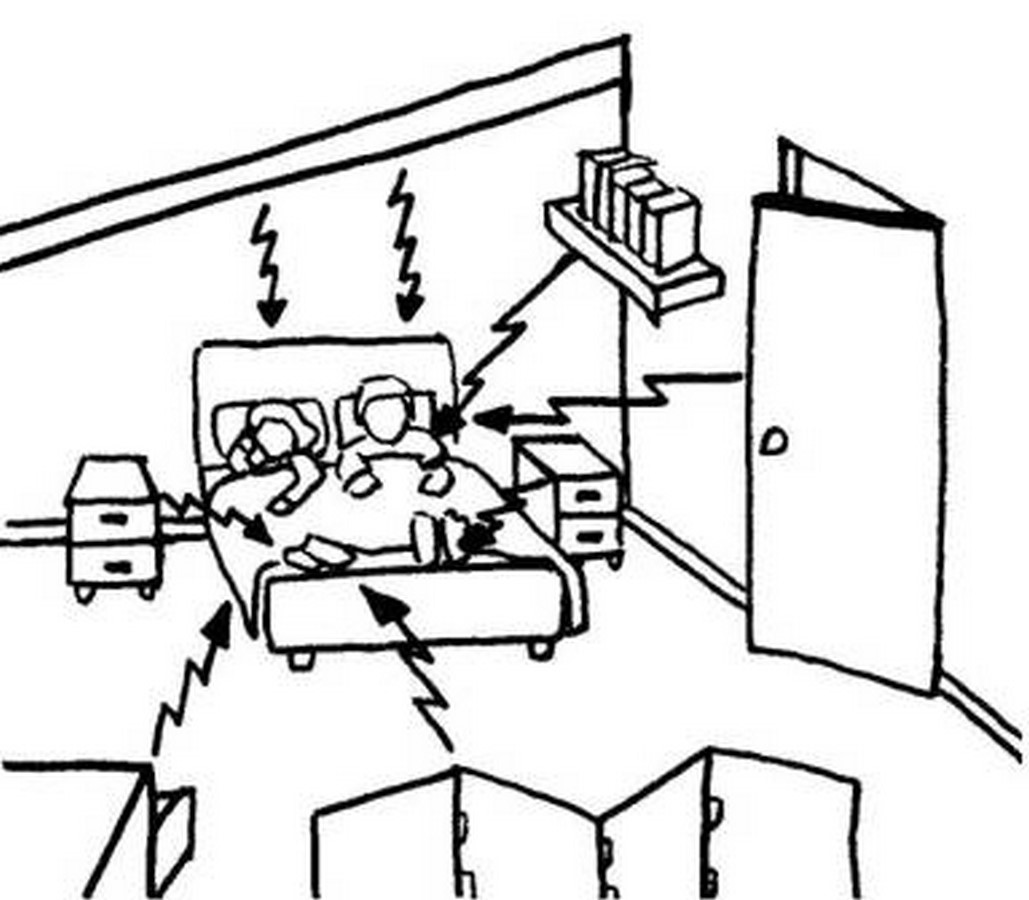
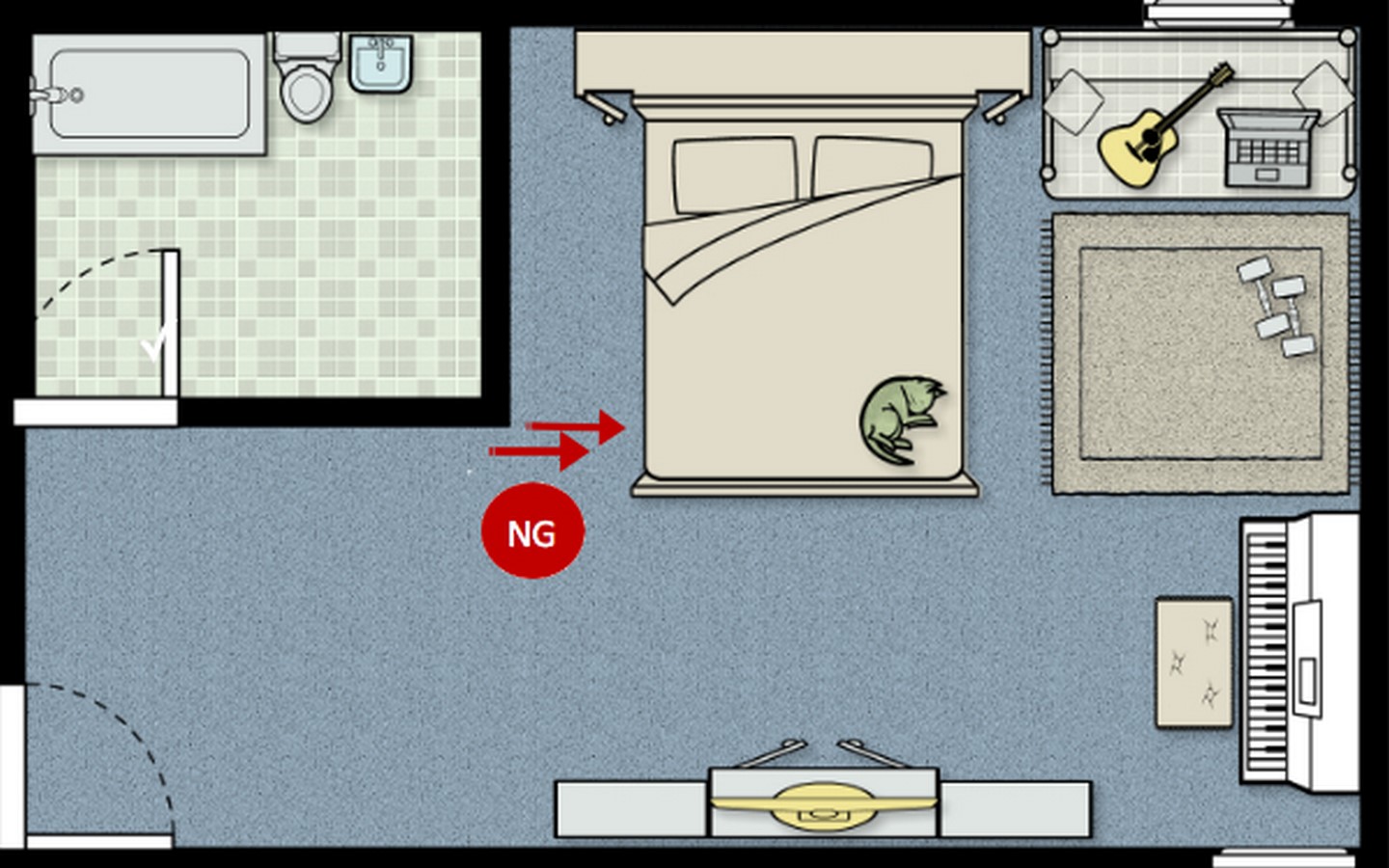
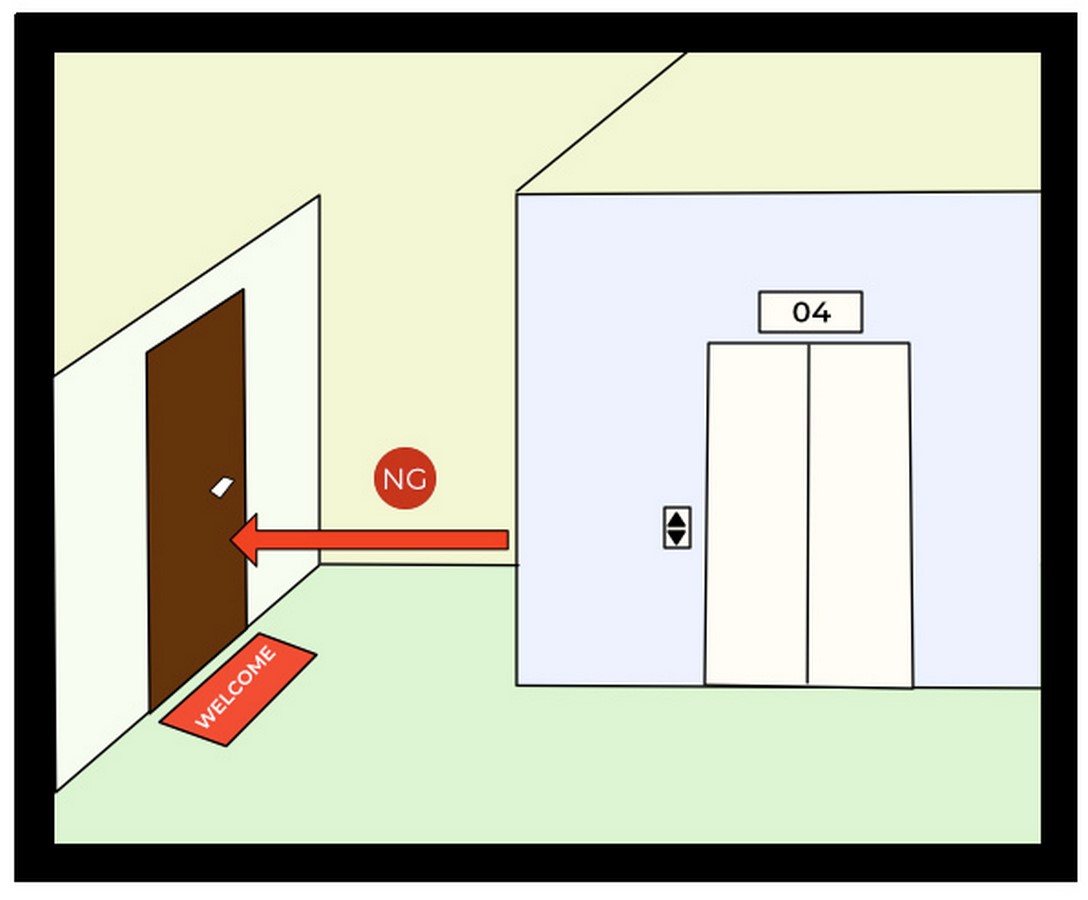
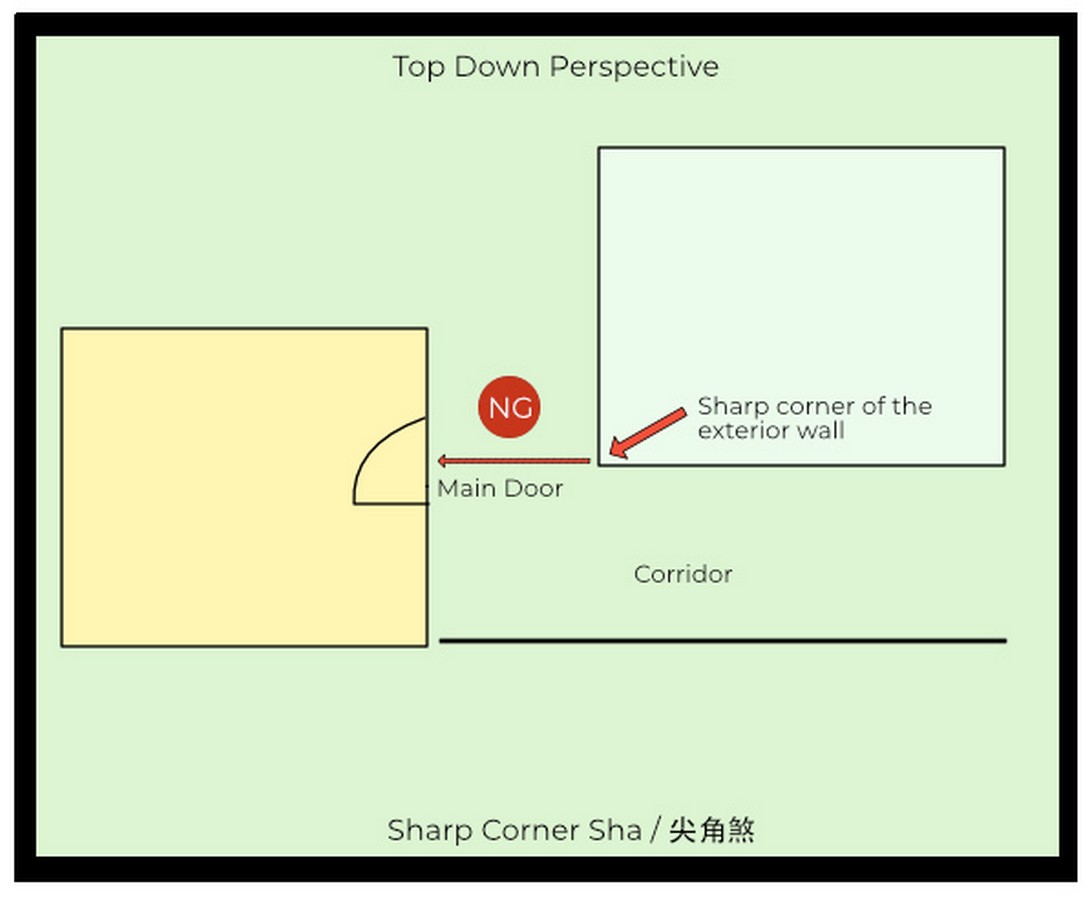
9. Important Feng Shui Rules in Room Arrangement Within the House.
The Feng Shui ideology strongly encourages buildings to arrange their rooms based on their properties. In Fengshui, Bedrooms are resting areas for people to relax in. Therefore, bedrooms should be placed away from spaces such as the garage, kitchen, office, and the stairs as these rooms conduct the main activities of the household which generates high Qi movements which are in conflicts with the lower energy required bedrooms. High energy spaces, especially Home Offices, should be enclosed with walls to prevent its energy from entering other rooms. Furthermore, Fengshui discourages the placement of the bedroom and the laundry room beside each other according to the five elements theory. The Water and Wind elements from these rooms would collide with each other. Additionally, bedrooms on the upper and lower floors should not be placed directly under each other as it will disrupt the energy movement within the house. Keeping these Feng Shui rules and regulations in mind, the optimal placement of rooms allows homes to prevent undesirable energy flow between spaces, benefiting the homeowners’ spiritual well-being in the long run.

10. The Colours Used for the Building Affects its Fengshui.
Other than the physical layout of the rooms, Fengshui also takes into account the color choices of your infrastructure. This concept comes from the five elements theory as stated previously. The five elements symbolize the universe changing forces that help to transform energies. The respective elements have different properties and they can be represented with material or colors easily. The color palette used in specific directions is said to be able to bring about positivity and balance or negativity and clashes in homes. Just like the main aim of Feng Shui, the use of colors in the five elements theory in architecture helps to form a beneficial energy cycle that will balance an environment and nourish the inhabitant’s lives.
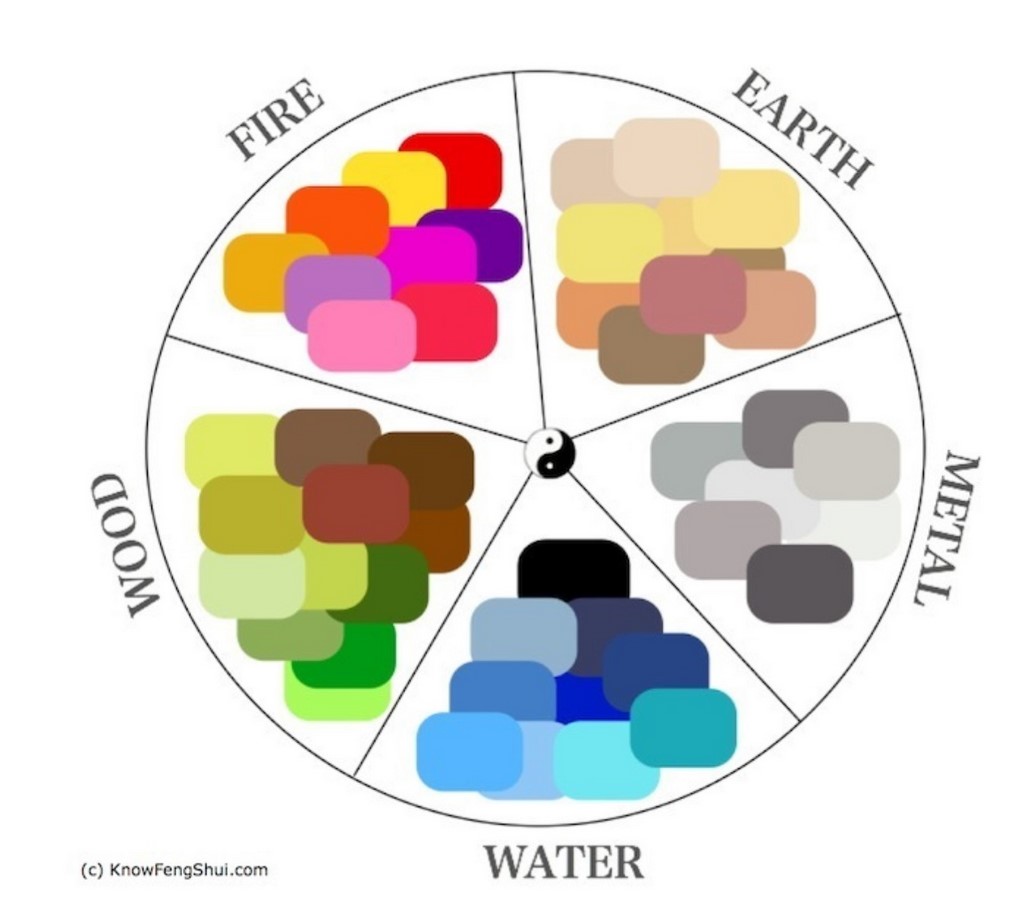
In conclusion, this listing is a short introduction to some of the Feng Shui terms, theories, and guidelines. If you would like to incorporate the Feng Shui ideologies into your projects, it would be best to consult an experienced Fengshui master for more accurate and insightful feedback specific to your brief.
References:
- http://fengshuidiy.com/door-facing-door-feng-shui-remedies/
- http://openspacesfengshui.com/feng-shui-tips/2010/01/feng-shui-bagua-map/2012-bagua-with-logo-3/
- http://www.fengshuipundit.com/feng-shui-colors/
- http://www.masteryacademy.com/resources/dsptutorials.asp?iframe=res_articels&id=459
- https://en.wikipedia.org/wiki/Bank_of_China_Tower_(Hong_Kong)
- https://en.wikipedia.org/wiki/Chinese_architecture
- https://en.wikipedia.org/wiki/Feng_shui
- https://feng-shui.lovetoknow.com/Bagua_Diagram
- https://feng-shui.lovetoknow.com/image/259439~feng-shui_studio-apartment-2.jpg
- https://fengshuibeginner.com/101/exterior-feng-shui-killing-energy-sharp-corner-sha/
- https://fengshuibeginner.com/101/feng-shui-tips-for-wall-corner-facing-the-bed/
- https://fengshuimechanics.com/2014/06/24/yin-zhai-feng-shui-life-grave/
- https://fengshuinexus.com/feng-shui-rules/feng-shui-five-elements-guide/
- https://hk.asiatatler.com/society/best-feng-shui-experts-hong-kong
- https://orange-transfer.com/forbidden-city-layout/
- https://reneelongworth.com/how-to-slow-down-the-qi-when-you-have-a-front-and-back-door-alignment/
- https://smithbrothersconstruction.com/feng-shui-architecture-brief-look/
- https://utzon.dk/portfolio-item/sydney-opera-house/
- https://www.bluemountainfengshui.com/dr-hsu-feng-shui-talk-21-four-features-of-the-classic-city-model/
- https://www.chinadaily.com.cn/china/2011-04/04/content_12272464.htm
- https://www.comuseum.com/painting/famous-chinese-paintings/along-the-river-during-the-qingming-festival/
- https://www.craigdintearchitects.com.au/single-post/2018/02/28/Feng-Shui-Basics-Floor-Plans
- https://www.fengshuied.com/feng-shui-bagua-map
- https://www.fosterandpartners.com/projects/hongkong-and-shanghai-bank-headquarters/#gallery
- https://www.insider.com/how-architects-use-feng-shui-to-design-famous-buildings-2019-10#:~:text=Some%20of%20the%20popular%20buildings,%2C%20Columbus%20Circle%2C%20and%20more.
- https://www.knowfengshui.com/feng-shui-colour-wheel/
- https://www.nipponpaint.com.sg/store/resources/painting-articles/feng-shui-house-colors/
- https://www.straitsvo.com/fengshui-for-beginners/
- https://www.thespruce.com/doors-and-windows-in-good-feng-shui-floor-plan-1275100#:~:text=The%20Role%20of%20Doors%20and%20Windows%20in%20Feng%20Shui&text=Simply%20speaking%2C%20the%20relationship%20between,powerful%20lore%20connected%20to%20them.
- https://www.thespruce.com/feng-shui-tips-for-poison-arrows-in-the-bedroom-1274768#:~:text=Drape%20a%20cloth%20over%20the,the%20cheapest%20or%20quickest%20remedy.
- https://www.thespruce.com/understand-the-basics-of-various-feng-shui-schools-1275250#:~:text=In%20general%2C%20most%20feng%20shui,metal%2C%20water%2C%20wood%20and%20fire
- https://www.travelchinaguide.com/intro/architecture/culture/fengshui.htm
- https://www.travelchinaguide.com/intro/astrology/fengshui/
- https://www.travelchinaguide.com/intro/astrology/fengshui/home-tips.htm
- https://www.yinspiredyoga.com/blog/2018/1/30/yin-primer



















































